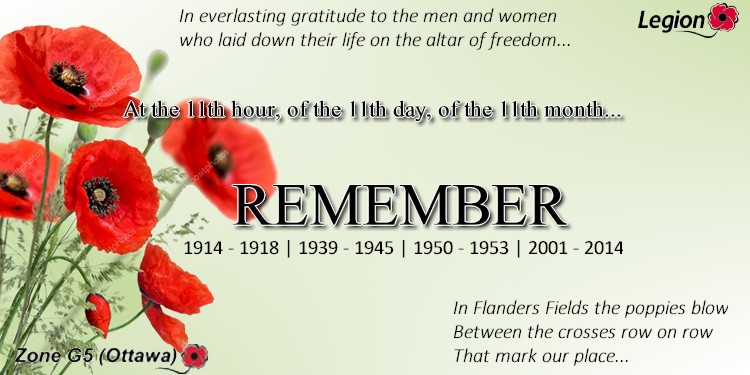|
|
|
At the 11th hour, of the 11th day, of the 11th month, as you
stand silently in Remembrance, wherever you are, that small
piece of real estate under your feet, becomes hallowed ground
and the ghosts of all those lost in defence of freedom, stand
with you. |
Two versions of an Aide-Memoire
have been prepared,
for use by Branch Poppy Chairmen in our Zone. The AIDE NET is in four
parts (each about 1 MB). It is perfect to look things up online, but it is
not suitable for printing.
The ZONE G AIDE print is in three parts
and when they are opened and printed using the latest version of Acrobat
Reader (available
FREE here), they come out perfectly in 8 1/2 x 11.

Article 11 of the Legion's General Bylaws deals with the Poppy Fund.
Read Article 11 here. |
|